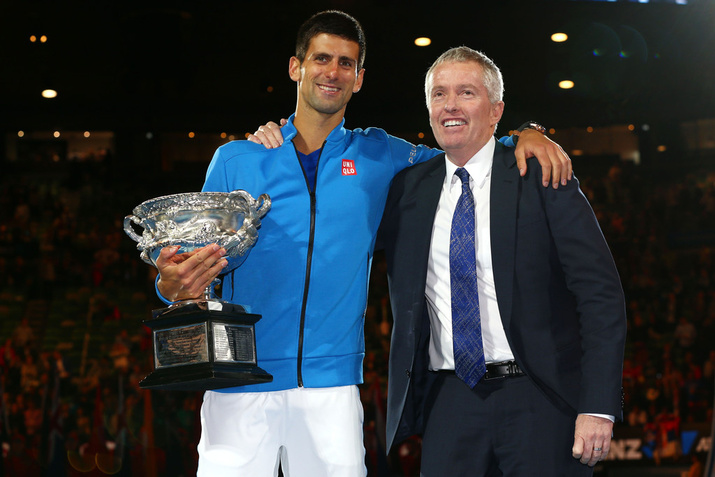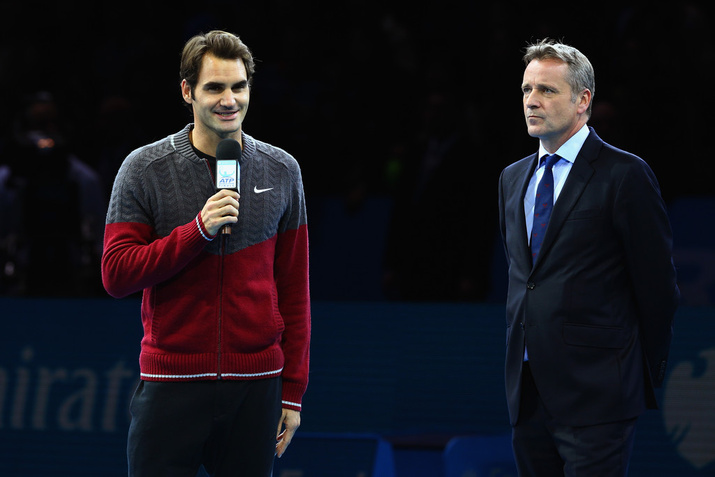Don't miss any stories → Follow Tennis View
FollowContemplating Changes to Tennis
Change is inevitable. It may be immediate or gradual, stark or subtle. As a general rule, everything and everyone is subject to it. Change is needed to adapt, and in some cases to survive. When it comes right down to it, however, the most important aspect of any change is whether it is for the better or for the worse.

Tennis is a sport that has been around for well over a century, and it has seen its share of various changes through the decades as officials have striven to make the game more player and fan friendly. This is a trend that continues today, as evidenced by comments that have recently surfaced from directors such as Chris Kermode and Craig Tiley, among others, who are looking to increase the sport's popularity. Suggestions include anything from playing lets and shortening the warm-up time to playing sets to four games, utilizing no-ad scoring, and even changing how the score itself is called. The thought is that this will increase the number of pressure points, as well as shorten the overall duration of the match, which they believe will make tennis more exciting and enticing to spectators.
Exploring options to make the game more appealing is an admirable and necessary goal, but it is essential that each option be explored thoroughly to determine if it is truly the best course of action. Lets would comprise a relatively small portion of points and would likely only require a small adjustment period. Warm-ups could also be made shorter simply by ensuring that players get their warm-up underway in a timely fashion once they are out on court and conclude the warm-up when the umpire calls time instead of hitting several more practice serves. Some of the other suggested changes, however, could hurt the game.
No-ad scoring, for example, has been used in doubles now for the last several years. Those matches do move more quickly and are therefore easier to gauge for scheduling purposes. But the no-ad scoring has not drawn significantly more fans to that facet of the sport. It has not lured more top singles players to compete in doubles either. And if it were implemented in singles, it would more likely hurt the game. It is the long, drawn-out deuce games that often raise the excitement level of a match. They suddenly take on more importance and often prove pivotal to momentum. And just as the games themselves should not be diminished in length, neither should the duration of the sets. With marquee matches often scheduled back-to-back, fans need time to exit the stadium after a match to grab a bite to eat or find some shade. They would like to be able to do this and return to the next match before the opening set is done and dusted. Additionally, playing the set to six games allows the tension to build if it remains a tight affair or allows one player to mount an unexpected comeback. It is hard to imagine that shortening the set by two games is worth sacrificing such scenarios.
Of course, there are other avenues that could be looked at when it comes to improving the image of the sport. Perhaps officials should look at putting more of a cap on the technology. Racquets are so large and so light that it is much easier today than it was just a couple of decades ago to bash away from the baseline. Consequently, it is also far more difficult to play in the forecourt and regularly employ touch and feel. To some degree, this has made many matches more about outhitting an opponent rather than out-thinking one.

It may also be time to review court surfaces and the tour calendar. Most players agree that the majority of surfaces have become increasingly slower, and there are hardly any tournaments on grass in comparison to the other surfaces. The term “specialist” is rarely used anymore. Adding more grass courts and speeding up others is apt to lead to more variety in playing styles, as well as a few changing faces in terms of who is reaching the business end of events. Along those lines, broadcasters could help the cause too by injecting a little more variety in whom they opt to showcase during coverage windows. Few people enjoy watching a lopsided blowout, and there is no telling what will attract a person to a player and the game. So while the top stars are and should remain the primary competitors who are featured on television and its accompanying formats, it also would not hurt to give a little more screen time to those other entertaining players who reside outside the top 10.
Obviously, there is a lot that could be done to change the game, but the bigger question will surround how much of it should be done. Change should not be made simply for the sake of change, and there is nothing wrong with preserving some of the core, traditional aspects of the sport. But change in some form will come, and it is up to the officials and players to ensure that whatever those changes may be, they are for the betterment and not to the detriment of tennis.










